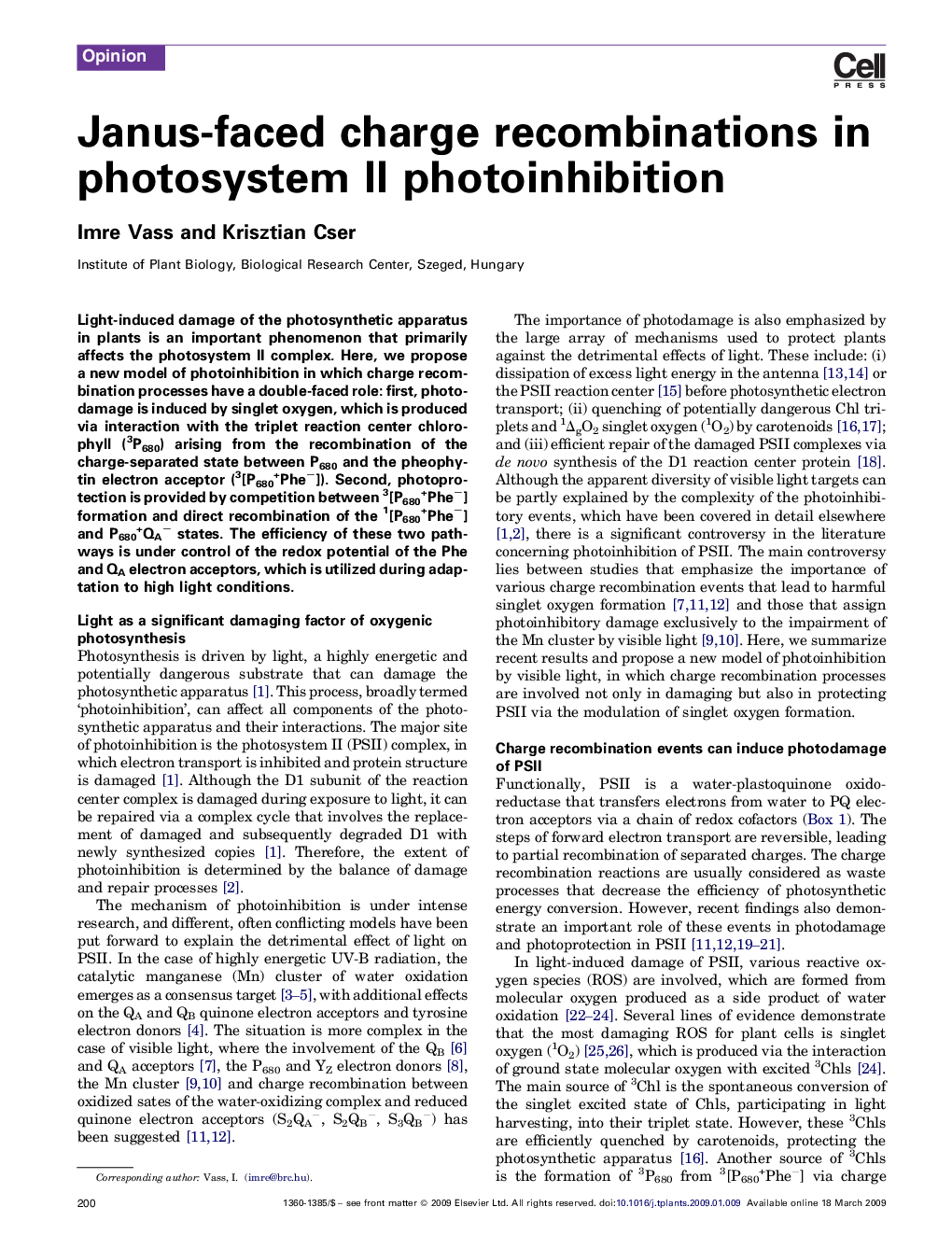| کد مقاله | کد نشریه | سال انتشار | مقاله انگلیسی | نسخه تمام متن |
|---|---|---|---|---|
| 2826853 | 1162283 | 2009 | 6 صفحه PDF | دانلود رایگان |

Light-induced damage of the photosynthetic apparatus in plants is an important phenomenon that primarily affects the photosystem II complex. Here, we propose a new model of photoinhibition in which charge recombination processes have a double-faced role: first, photodamage is induced by singlet oxygen, which is produced via interaction with the triplet reaction center chlorophyll (3P680) arising from the recombination of the charge-separated state between P680 and the pheophytin electron acceptor (3[P680+Phe−]). Second, photoprotection is provided by competition between 3[P680+Phe−] formation and direct recombination of the 1[P680+Phe−] and P680+QA− states. The efficiency of these two pathways is under control of the redox potential of the Phe and QA electron acceptors, which is utilized during adaptation to high light conditions.
Journal: - Volume 14, Issue 4, April 2009, Pages 200–205